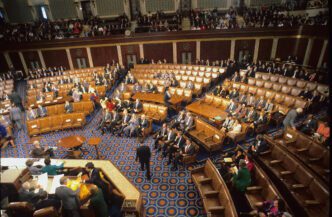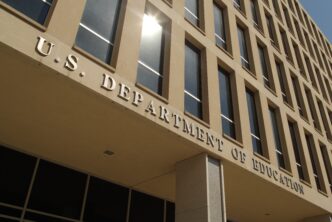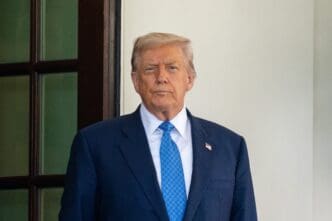Executive Summary
The Story So Far
Why This Matters
Who Thinks What?
President Donald Trump has escalated his efforts to remove Federal Reserve Governor Lisa Cook, filing an emergency appeal with the Supreme Court on Thursday. The move came just a day after the central bank initiated its first interest rate cut in months, reigniting a high-stakes debate over the independence of the Fed and the extent of presidential removal powers. Trump’s administration cites allegations of mortgage fraud against Cook as the basis for her dismissal.
This emergency appeal places the critical question of Federal Reserve independence, a matter of significant consequence for the U.S. economy, directly before the nation’s highest court. The justices had previously appeared to grant special protections to the agency, yet Trump’s current effort introduces new legal theories that could find traction with the conservative-majority court.
Should Trump succeed in dismissing Cook, it would mark a historic first, as no Fed governor has ever been fired by a president in the central bank’s 111-year history. The broader context includes Trump’s consistent criticism of Fed Chair Jerome Powell for maintaining high interest rates, leading some critics to suggest that targeting Cook is a strategic move to pressure the institution.
In its emergency appeal, the administration argued that the Federal Reserve Board’s “uniquely important role in the American economy only heightens the government’s and the public’s interest in ensuring that an ethically compromised member does not continue wielding its vast powers.” This statement underscores the administration’s justification for the removal.
Trump initially fired Cook on August 25 following allegations from an administration member that she had committed mortgage fraud by declaring two different homes as her primary residence—a practice that can secure more favorable loan terms. Subsequent documents have indicated that Cook sometimes described the second property as a “vacation home.”
Lower Court Rulings
A federal court, presided over by U.S. District Judge Jia Cobb, a nominee of President Joe Biden, blocked Cook’s dismissal on September 10. The court asserted that Trump had not “identified anything related to Cook’s conduct or job performance as a board member that would indicate that she is harming the board or the public interest.”
The Trump administration promptly appealed this decision to the D.C. Circuit, which on Monday declined to halt Judge Cobb’s ruling. U.S. Circuit Judges Bradley Garcia and J. Michelle Childs, both Biden nominees, concurred with Cook, noting her property interest in the position and her entitlement to “some kind” of process before removal, which the government had not provided.
However, U.S. Circuit Judge Gregory Katsas, a Trump nominee, issued a dissenting opinion. Katsas argued that the president “plainly invoked a cause relating to Cook’s conduct, ability, fitness, or competence,” suggesting that the allegations against Cook could constitute mortgage fraud if she acted knowingly, which is a felony offense.
Arguments Before the Supreme Court
In its emergency appeal to the Supreme Court, the Trump administration characterized the D.C. Circuit’s decision as “yet another case of improper judicial interference with the president’s removal authority.” The administration also requested Chief Justice John Roberts to issue an immediate, short-term “administrative” order to remove Cook from the board while the case progresses at the high court.
The administration also rejected arguments that Cook was entitled to a process to refute the allegations prior to her dismissal. U.S. Solicitor General D. John Sauer informed the court that the lower courts’ theory, which likens principal officers to “teachers or lower-level civil servants” entitled to notice and a hearing, is “untenable and would wreak havoc on sensitive presidential decision-making.”
Trump has a record of emergency victories at the Supreme Court that have allowed him to remove leaders of independent federal agencies. However, the court has previously taken measures to distinguish the Federal Reserve in such cases, emphasizing its unique history and the critical importance of its independence.
The Cook appeal introduces a distinct legal question: who ultimately defines “cause” for removal. Trump maintains that the allegations against Cook constitute sufficient “cause” for her firing, citing a 1901 Supreme Court precedent to argue for broad executive deference in defining cause for removal purposes.
Adding to the dynamic, Stephen Miran, a Trump appointee and White House economic adviser, was sworn in as a new Fed governor just before this week’s Federal Reserve meeting. When questioned about Miran’s unusual arrangement of serving as a Fed governor while remaining a White House employee, Chair Powell affirmed the agency’s “strongly committed to maintaining our independence,” declining further comment.
The Supreme Court’s decision in this case will carry significant implications for the balance of power between the presidency and independent agencies, specifically shaping the future of Federal Reserve independence and the criteria for removing its governors. It represents a pivotal moment in determining the scope of presidential authority over key economic institutions.








